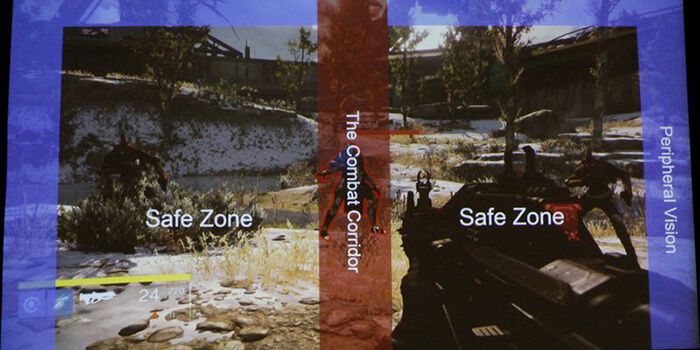Over time, Destiny has proved just as controversial as it has addictive. Despite a huge and dedicated community of over 16 million players, Destiny's become somewhat of a punching bag among hardcore gamers. The game is too small; there's not enough endgame content; the loot system is stingy to the point of being broken; the story makes no sense; and so on. At this point, it's not hard to fill in the blanks.
Even among players who love Destiny, many aren't sure exactly why the game is so addictive. Still, they can't stay away. The game's satisfying, fluid combat probably has a lot to do that. Before developing Destiny, Bungie spent over a decade working on the groundbreaking Halo franchise, and it shows. Destiny has its share of disappointments; the gunplay is not one of them.
In a talk at this year's Game Developers' Conference, senior animator David Helsby shared the secret to why Destiny feels so good. In short, it all comes down to the camera. According to Helsby, first-person cameras are hard to get right. In real life, peoples' heads don't always follow their bodies, and mimicking that movement in a video game takes a lot of finesse. If a first-person camera doesn't move at all, it feels like the player is floating. Move the camera too much, and around 10% of players get nauseous, similar to the "virtual reality sickness" that plagues systems like the Oculus Rift.
To solve this problem, Helsby and his team turned to footage of professional boxers, paying specific attention to how competitors moved when throwing a punch. In boxing, every movement is deliberate. Before striking, boxers lead with their heads to increase momentum, then over-correct once the punch lands to maintain balance. Bungie borrowed that swinging, head-first pattern to create the illusion of Destiny's natural, graceful movement.
That's not all, of course. Bungie also moved Desiny's "aim point" (the spot on the screen where the players' gun is pointing) much lower than it would be in other first-person shooters. As a result, there's more room on the sides and top of the screen, making the view much more immersive.
Of course, none of this would have been important had Helsby and the other animators not used their time wisely. Instead of creating 24 custom animations, for example, Helsby simply decided that characters would lower their guns out of view before throwing a grenade. That saved time and effort, and gave the animation team more time to experiment with other, more important features. As Helby said, the key to good art is to give the artists an opportunity to experiment, as well as "time to polish their work, and make it as good as possible."
Source: Polygon

